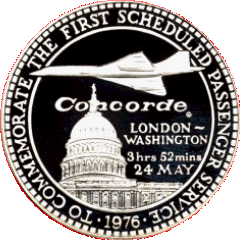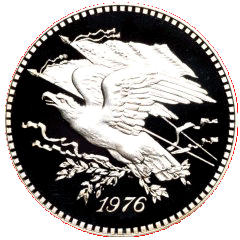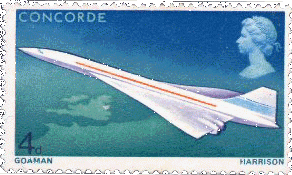


Gli Speciali
clicca la bandiera
version
Homepage
Immagini
L'Ultimo Volo
![]()
A dream for the people all..
...until the next generation of supersonic transport plane, for looking the earth from the space (NASA project).
The first supersonic airplane used for a comercial flight Line., until november 26th 2003 end of flight.
Average flight time between London Heathrow and New York
JFK was three hours and 20 minutes. A Boeing 747 averages
more than seven hours for the same journey.
The Concorde cruises at Mach 2, or twice the speed of sound*.
That means you can get to places in a Concorde faster than in
a regular airplane. (Technical
features)


Concorde Collectability
The demand for Concorde memorabilia
seems to have grown recently with the announcement
of Concorde's retirement. Perhaps many people who have flown
Concorde wish to have a lasting souvenir,
and those who have never flown Concorde, and now will never
get the opportunity again, also wish to own
a piece of aviation history. Who knows when supersonic
passenger travel will next be available?
1976 concorde medallion -
platinum € 1.450 each
http://www.24carat.co.uk/1976concordemedallionplatinum.html
In fact, you can "arrive before you leave!"
How?
Well, it's a matter of timing. For example, if you flew from London to New York, it would take you 3.5 hours. You could leave London at 5 PM and arrive in New York at 3:30 PM -- 1.5 hours before time of take-off!
Why?
Because you crossed 5 time zones (setting the clock back 5 hours) in just 3.5 hours
In total 20 Concordes were built between 1966 and 1979. The first 2 Concordes were prototype models, one built in France and the other in England.
Another 2 pre-production prototypes were built to further refine design and test out ground breaking systems before the production runs, of only 16 aircraft in total, commenced in both countries.
British Airways - Concorde
The Fleet

Air France - Concorde
Flyngfleet
The first production aircraft off each production line did not enter service but acted as a test bed for production techniques, airline training and further development work. They also paved the way for the granting of airworthiness certification as well as providing extensive route proving information.
Air France returned 4 aircraft to service after the Paris accident in July 2000, of the others; one was retired for spares use in 1982, one never completed a D check (due to retirement) and the final one was the aircraft lost in the accident. The 4 servicable aircraft were retired to museums in France, Germany and the US.
crashed in Paris in 2000 - The only Concorde crash
British Airways operated 5 aircraft, after the accident with a further 2 in storage at London Heathrow, that were not modified post accident.
All 7 have now been retired, and are on display around the world.
Originally 120 planes were planned but only the two airlines bought the planes and costs skyrocketed even further.
One of the limiting factors was that Concorde could only travel supersonic over water. Overland the sonic boom was too disruptive (it was a technical problem the engineers could never overcome).
F14 tomcat - Sonic Bang view
NASA ipersonic X43
For a Concorde inside virtual tour, clik
(BBC/BritishAiways)
http://news.bbc.co.uk/1/shared/spl/hi/uk/03/concorde_retires/virtual_tours/html/default.stm
" Noise" - "Il Naso"
clik the thumbnails
sedili - seats
Concorde - Technical features
![]()

front view - frontale - clik thumb
side view - laterale - clik thumb

view - pianta - clik thumb
Cruising speed : 2,150 km/h (1,336 miles/h Mach 2.02) at 16,765 m (55,000 ft)
Economic cruising speed : Mach 2,05 (905 Km /s for subsonic - Mach 0,93)
Cruising altitude : 18.288 m 60.000 feet (Boeing 747 --> 13.000m)
Maximum altitude : 19.202 m 63.000 feet
Length of runway with maximum weight:
for take-off 3600 m - 2.2 miles
for landing 2200 m - 1.3 miles
Power is supplied
by four twin spool turbojets installed in pairs
Engines : 4 Rolls-Royce-Snecma, Olympus 593 Mark 610 turbojets -
Engine thrust 17 tonnes - 38,050 lbs
motore - visione laterale - clicca photo
motori - visione posteriore - clicca photo
Links
http://www.concordesst.com/
http://www.britishairways.com/concorde/index.html
http://www.britishairways.com/concorde/index.html
http://www.britishairways.com/travel/concvidwm/public/en_
http://news.bbc.co.uk/1/hi/in_depth/uk/2003/concorde_retirement/default.stm
http://news.bbc.co.uk/1/shared/spl/hi/uk/03/concorde_retires/virtual_tours/html/default.stm
http://www.concordesst.com/fleet.html
http://www.allstar.fiu.edu/aero/princ1.htm
http://www.24carat.co.uk/1976concordemedallionplatinum.html
arcadiadreams - arcadiafarm - veneziarcadia --->siti del Progetto Arcadia by zepp